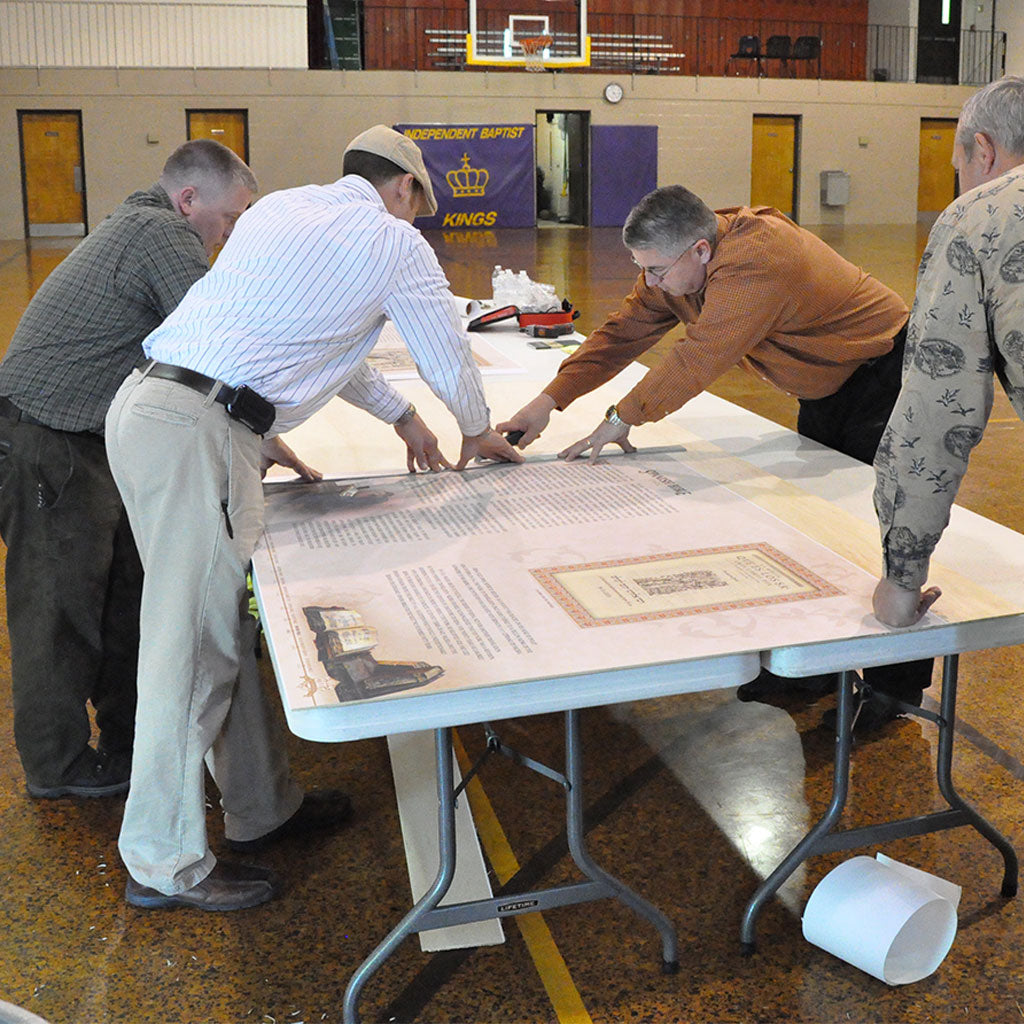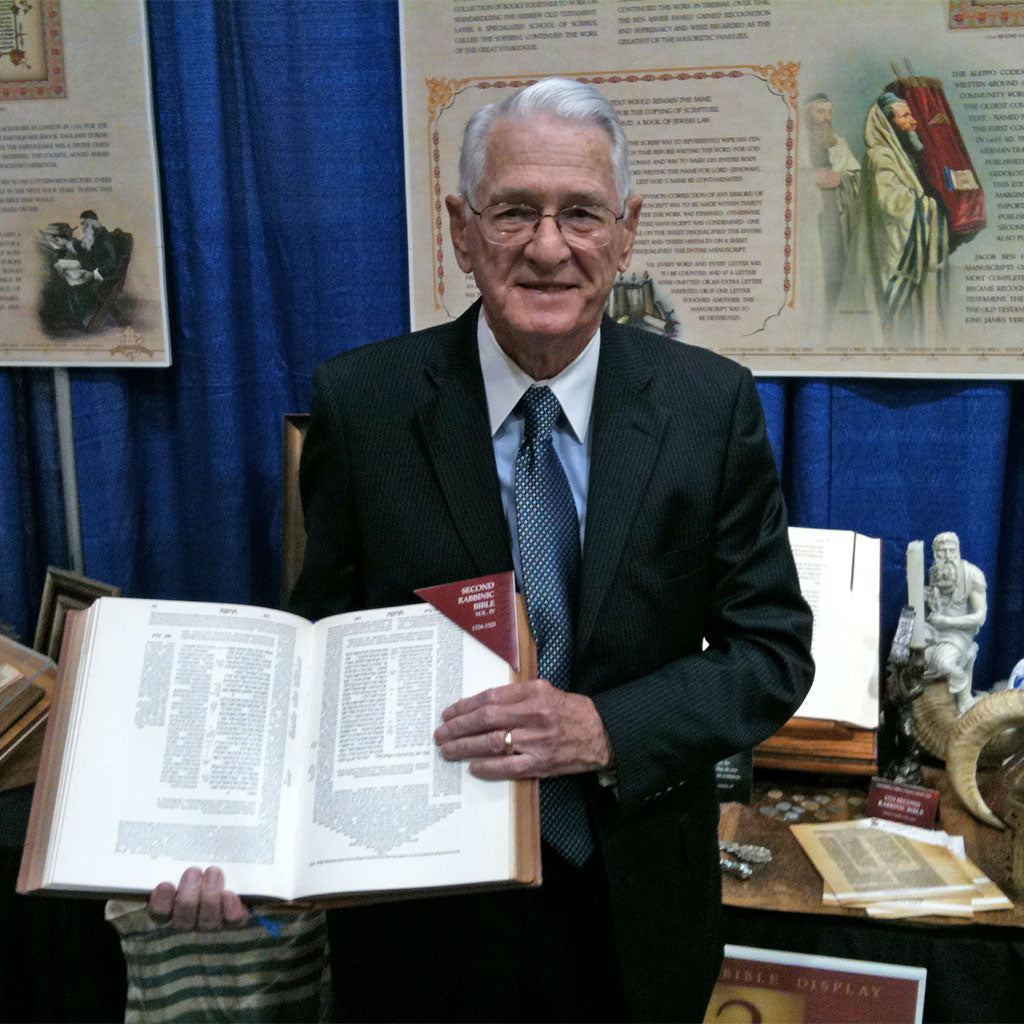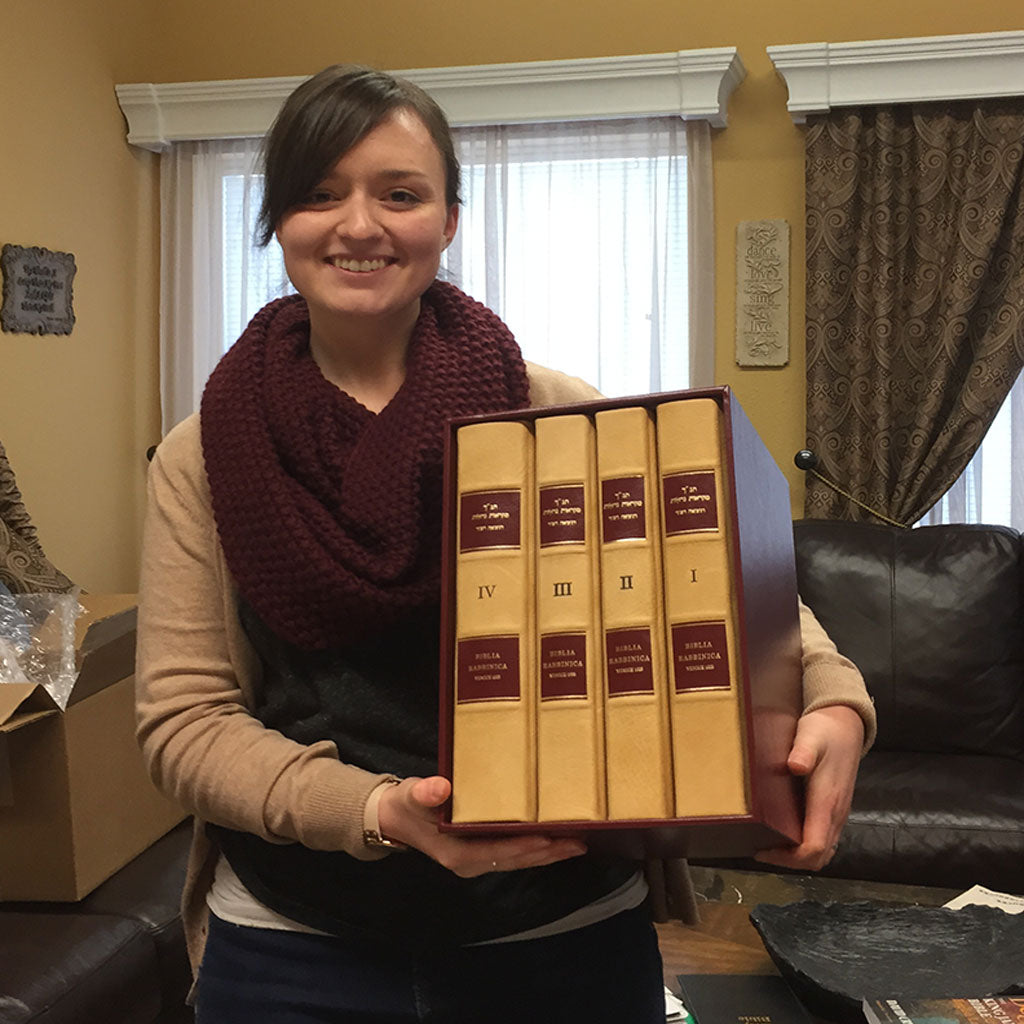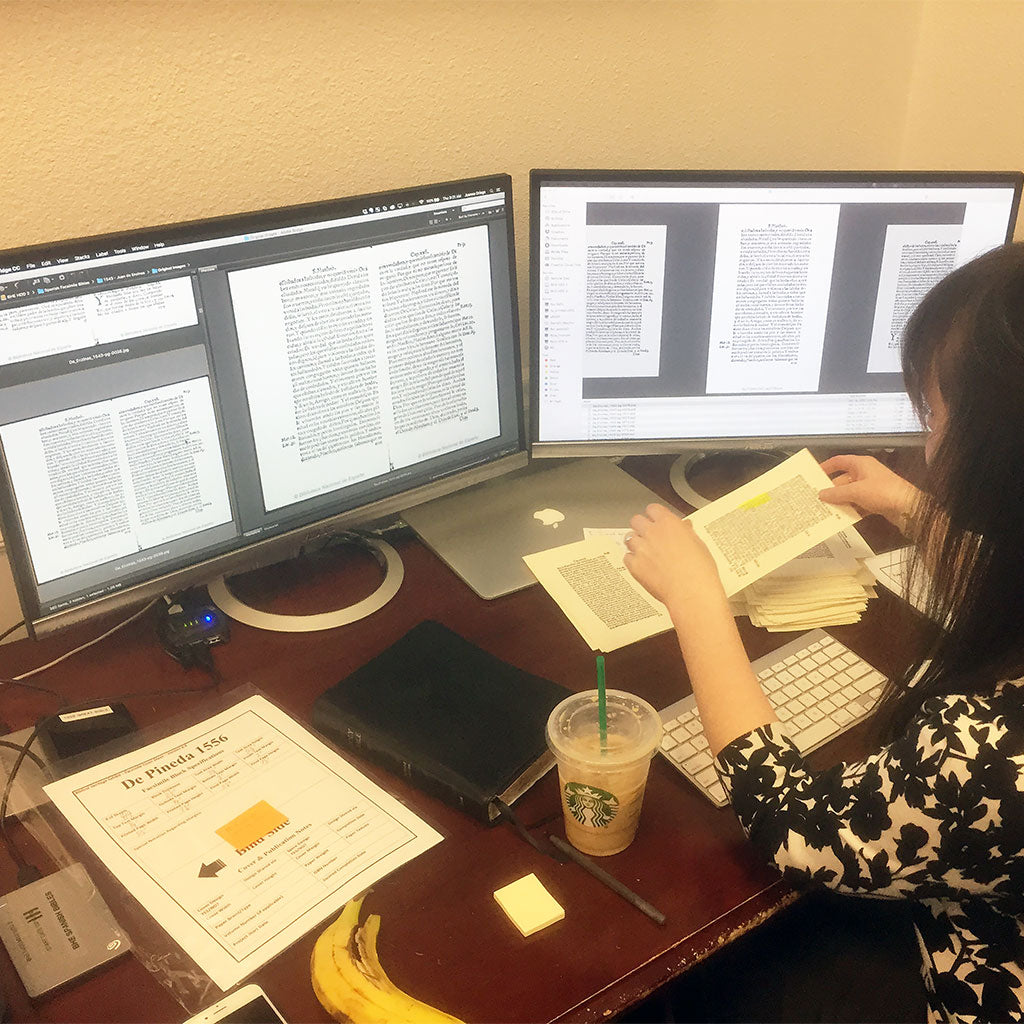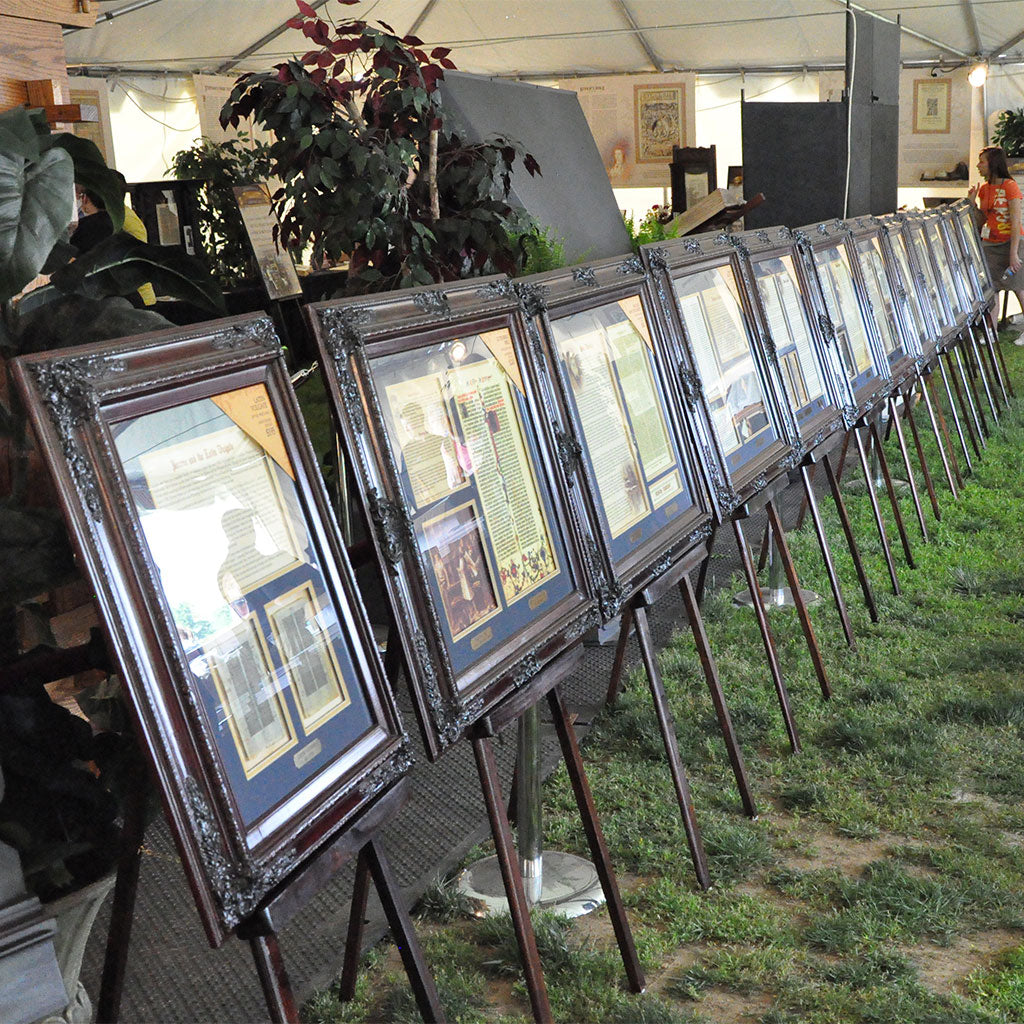Mamusse Wunneetupanatamwe Up-Biblum God — more commonly known as the Algonquian Bible or the Eliot Indian Bible of 1663 — is widely recognized as the first Bible of any language to be printed on a printing press in North America, and the single largest printing endeavor of the early colonial period.
Created and produced by the dedicated team at the Biblical Heritage Exhibit, this facsimile reproduction is printed on opaque paper and bound in a rich brown distressed faux leather, adorned with detailed gold foil stamping.
As a non-profit organization, the Biblical Heritage Exhibit receives a majority of its funding through donations from fellow believers and churches who desire to support our mission - to educate the world of the story of the Word of God.
Would you like to take part in helping us continue this God-honoring work by pledging a financial donation? Whether this comes from an individual or from a church family, every little bit helps us to continue to grow and expand to reach more people with the history of the Christian's "Love Letter from Home."
Follow the link below to learn more.
For over 10 years, the Biblical Heritage Exhibit family has strived towards our mission to teach the world the history of the Holy Word of God. Follow the link below to learn more about our efforts and collaborations that have made the Biblical Heritage Exhibit what it is today.

